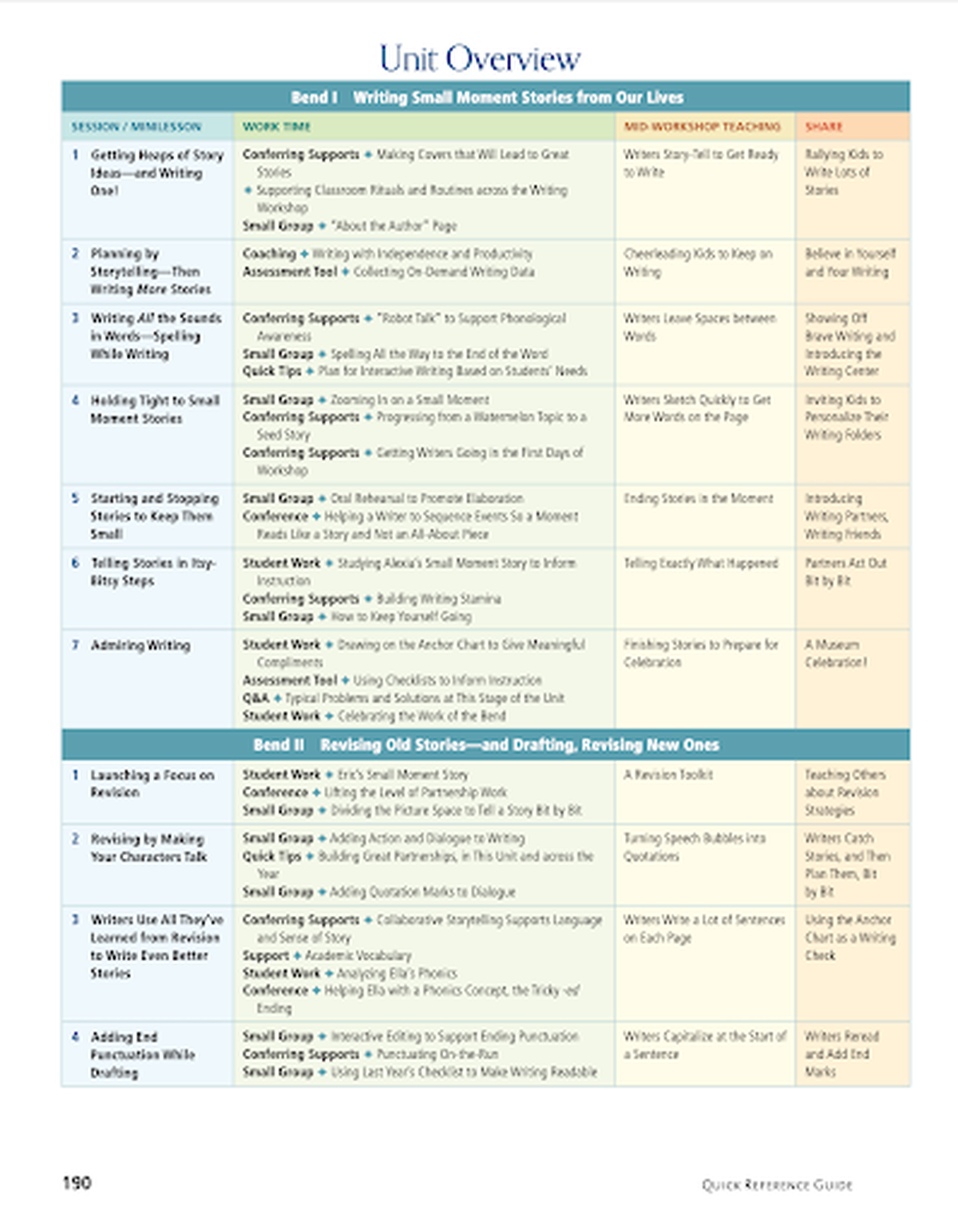By Sarah Mann
As educators, we all rely on our go-to tools to guide and support students in their writing journey. Anchor charts, teacher demonstration texts and Units of Study books are three flexible tools that I turn to, time and again, during writing workshop.
Anchor Charts:
Anchor charts are a staple at The Reading and Writing Project at Mossflower. Teachers use them. Students use them. Teachers and students use them together. We use them frequently in our units to display key information and strategies from a lesson because they are extremely useful to students and can be used in a variety of ways. Here is an anchor chart we use during our “Small Moments” unit.
Here is an anchor chart we use during our “Small Moments” unit.
A Teacher Tool
Have an anchor chart handy when assessing students’ writing. Use the chart to help you notice what your student is already doing well (for instance, she told the story bit by bit) and then think about possible next steps with that student (for example, adding dialogue). You might jot students’ names next to their next steps on the anchor chart.
A Conferring Tool
Display the anchor chart while conferring with students. Point out areas that the student has already accomplished well and those that writers need to develop. You can also use this tool to get kids to think about and name what they are working on as writers and what their goals are. This will support student agency during conferences.
A Student Tool
Students can use anchor charts independently. They might make tally marks every time they use a strategy, as they write their first drafts. During the revision process, writers can place the anchor chart alongside their drafts and use it to think about areas they use regularly in their writing and their next steps or goals. They might even find it helpful to circle their goal on the anchor chart to remind/help them.
Cut it Up!
Invite students to use anchor charts to evaluate student exemplar or mentor texts. Cut up a chart so that students can mark up the exemplar by attaching pieces of the chart on the writing itself. Ask students to identify what strategies the author is using that students could try in their own writing.
 Here is an example of a marked up student piece from our Grade 1 “Small Moments” unit.
Here is an example of a marked up student piece from our Grade 1 “Small Moments” unit.
Make it Mini!
Students and teachers alike gravitate towards miniatures, and anchor charts are no exception!
Place mini anchor charts in sheet protectors on a ring holder, and they become easy to use, portable versions that kids love.
Teacher Demonstration Texts
Many of us love to write demonstration texts and share our own stories with students as a way for them to get to know us and build community in the classroom. Others prefer to use demonstration texts written by others, such as the texts that accompany the Units of Study. Still others of us enjoy creating a shared text with our students based on a common experience.
One of my all-time favorites is the shared text example from the Grade 1 “Small Moments” unit. Teachers reenact a version of this story, where they trip on the corner of a classroom rug while carrying an armful of pens. Then, the teacher invites kids to recall this event and help compose a narrative text through shared writing. Shared writing brings writers through the writing process (from idea generation to planning and then to drafting and revising) and helps immerse them in the genre in which they will write.


 Sample Demonstration Texts from Grade 1 “Small Moments” Unit
Sample Demonstration Texts from Grade 1 “Small Moments” Unit
Whether we create our own demonstration texts, take them from the Units of Study or co-create them with our students, they are tremendous resources for kids to study and learn from.
You can also create different versions of the same text to show kids how to go through the writing process. For example, you might have the same text of “The Falling Pens” with just the illustrations going across the pages. This story could be stored in sheet protectors so that you can write on the pages with dry erase markers and use it again and again. This is a great way for kids to see how you use your plan and your illustrations to write – and rewrite – your story.
Units of Study Books
For us, these books are like best friends. We hold them dear.

Need a small group or conference? Pick up the book, and you will be able to draw from a number of work times offered in the unit. Need an overview?
Go to the back of the book and skim through the units at a glance. Want a quick work time? There are plenty to choose from – usually 2-3 possible work times offered for each session.
Teach the work time as is, or make it your own. Turn a conference into a small group or use the content of a small group to support a one-on-one conference. And these resources are completely modifiable to meet the needs of your particular students.

My copy of the Units is well-loved with sticky notes tagging my favorite resources. I use color-coded sticky notes (revising is all in yellow, editing all in blue, planning all in pink).
What are your favorite tools and strategies during writing workshop? Which techniques help your students thrive as writers? Share your ideas with us, or connect with a colleague and inspire each other. We’d love to hear your tips and insights!




